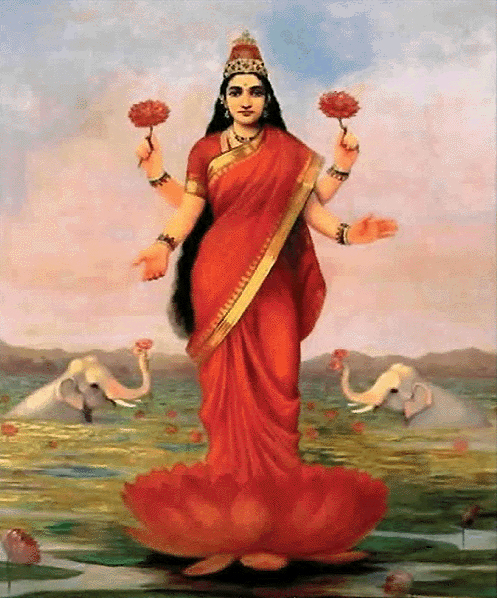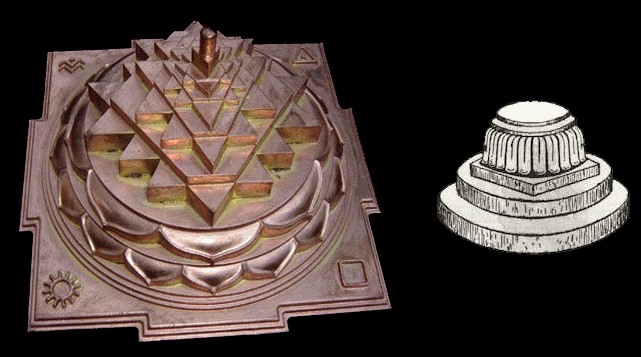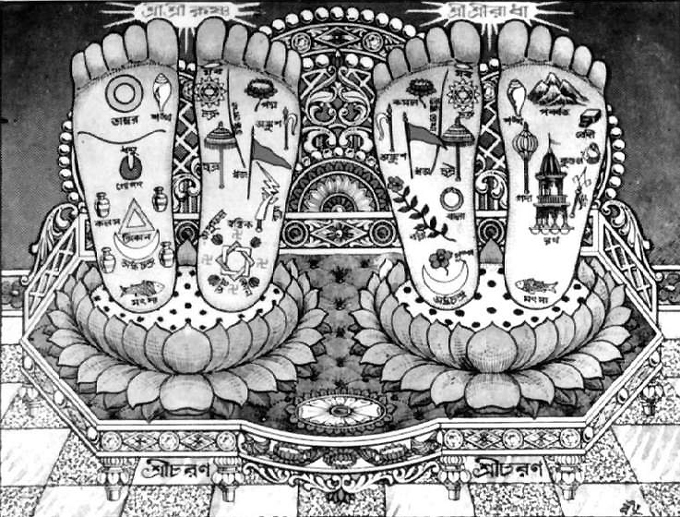
|
|
|
|
BY: SUN STAFF

Laksmi Devi on Padmasana May 23, 2011 — CANADA (SUN) — A study of the historical, spiritual and cultural elements of Vedic design. In the last several segments of this series we began a study of the Lotus in Vedic design, beginning with some of the symbolic motifs and sastric associations of the Lord with this sacred flower. Today we'll begin to study depictions of the lotus as a pedestal upon which various divine entities are seated. The most common Sanskrit term used to describe the lotus pedestal is padmasana -- being padma (lotus), and asana (seat). But it is not only the divine personalities who are found seated or standing upon the lotus base. As we see in the images below, divine symbols are also found resting upon the lotus.

Sri Chakram (left) and Balipitha (right) In the representation known as Sri Chakram, Mount Meru is situated upon the padamasana. As we mentioned in the second segment, Mount Meru itself is also represented by the lotus flower, the sacred peak being the fruit rising from the center of the petals, which themselves represent Mother Bhumi, the earth. Just as the Agama-sastra sets forth very precise instructions for temple architecture, building shrines, making deity forms, etc., so the design of the padmasana is influenced by mathematics, not simply artistic taste. Two Russian researchers, Alexei Kulaichev and Ivan Kovalchenko recently conducted some interesting studies into the geometry of Sri Chakram. Kulaichev's work was inspired by the structural depth and geometric beauty of the form, and he discovered that it is actually an amazing mathematical representation. The researchers discovered that to build such a figure and analyze it algorithmically is a very difficult task, taking more than a hundred million computing operations to perform. The complex system of algebraic equations inherent in Sri Chakram are borne of a highly advanced science, which was obviously present at certain times in Vedic culture. To the right of Sri Chakram is another example where padmasana is found without a transcendental personality seated upon it. This is the form known as balipitha, a common element in Vedic architecture. The balipithais a pedestal which bears a representation of the lotus footprints, usually of the temple's presiding deity. Puja offerings are made to this murti. The balipitha is generally located next to and at the base of the dhvajastambha, but closer to the deity than the flag pole itself. Offerings of vermillion colored rice are typically made at the balipitha. These offerings are meant for the parivaradevatas, or attendant and associate deities in the temple.

Radha-Krsna Carana
Beginning at Part Seven of this series, we offered four segments exploring designs featuring the auspicious markings on the body of the Lord and His transcendental associates. As we see in the image above, the Radha-Krsna carana is a representation of the Lotus Feet of Their Lordships, which bear all auspicious marks described in sastra. Like balipitha, the Lotus Feet are seated upon padmasana, the sacred lotus pedestal.
| |